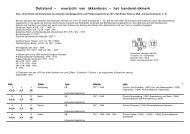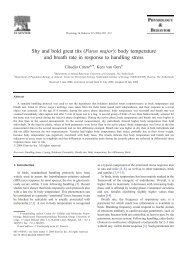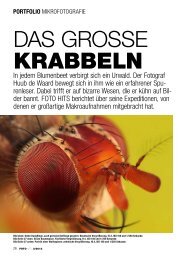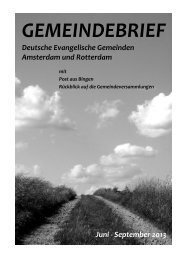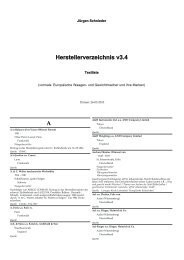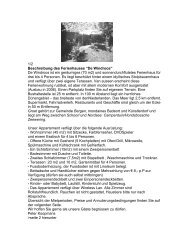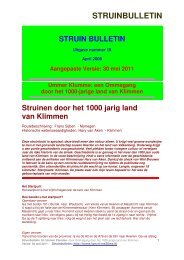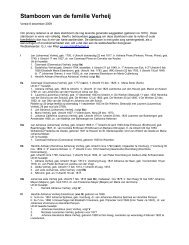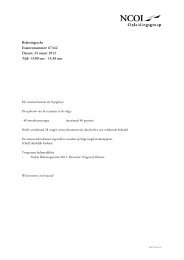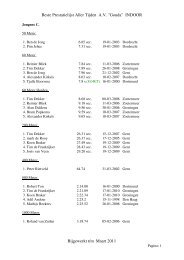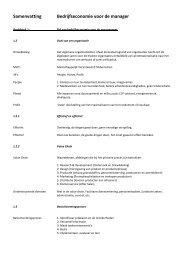The Makassar Malays - Cambridge Journals
The Makassar Malays - Cambridge Journals
The Makassar Malays - Cambridge Journals
You also want an ePaper? Increase the reach of your titles
YUMPU automatically turns print PDFs into web optimized ePapers that Google loves.
410<br />
heather sutherland<br />
Kasim, forefather of inhabitants of Kampung Butung, and a daughter Puteri Johor Manikam, whose<br />
descendants lived in Kampung Melayu. Puteri Johor Manikam married Ince Subuh, who was of<br />
Chinese–<strong>Makassar</strong>ese descent. His family story relates how two Chinese trader brothers left Melaka<br />
and went to Cirebon in West Java. One source specifies that these men were Muslim. 73 <strong>The</strong> younger,<br />
Layti (Lai I Tjio), settled there after marrying a daughter of one Tumenggung Batang, while the<br />
elder brother, Failantia (Pao Lau Tia) took his share of the trade goods and went to Sanrabone,<br />
south of <strong>Makassar</strong>, where he was given permission to settle. In accordance with the ruler’s request,<br />
he married a well-born local woman. <strong>The</strong>ir son, Ince Abdul, also married well, and his son Ince<br />
Subuh, alias Ince DaEng, became the son-in-law of Paduka Raja Maharaja Lela. <strong>The</strong>ir children<br />
married further into Chinese Muslim families. One grandson, Ince Bungsu, the seventh <strong>Makassar</strong><br />
Kapitan Melayu (1750-52), was married to a peranakan Chinese, and their grandson, Ince Taman,<br />
was an imam of the Kampung Butung mosque, as were several cousins. 74 This ‘mesjid peranakan’,<br />
now officially the Mesjid Mubarrak, lies directly opposite the modern Butung market. <strong>The</strong> imams<br />
there seem to have been peranakan Chinese until 1973 or 1975. 75<br />
Although intermarriage between <strong>Malays</strong> and Chinese Muslims was common, it is often<br />
invisible in genealogies because of the use of Muslim names. However, it is clear that some branches<br />
of Malay families were closer to the Chinese community than others. For example, Ince Muhammed<br />
Saleh , a son of the famous Datuk Pabean (or Ince Ali Asdullah, see below) married I Na’na, whose<br />
father Ince Abdul Gaffar Datuk Gaddong, was the son of the Chinese Muslim Ong King Cong and<br />
his wife Ong Nio, who probably lived in <strong>Makassar</strong> in the early eighteenth century. <strong>The</strong>ir<br />
descendants mainly have Muslim names, though some bear the prefix ‘Baba’ or ‘Nyai’, and a few had<br />
Chinese names. Some spouses are identified as peranakan Chinese. Like many groups in Indonesia,<br />
the Malay association today runs several rotating credit associations, or arisan, and in 2000 one was<br />
still specifically for wives of Chinese Muslim descent. 76<br />
<strong>The</strong> closeness between the two communities, with the concomitant blurring of boundaries,<br />
could also be problematic. <strong>The</strong> <strong>Makassar</strong> Chinese had their own version of their relationship with<br />
the <strong>Malays</strong> immediately after Speelman’s victory. <strong>The</strong>y claimed that at that time the Kapitan of the<br />
Chinese community, Ong Watko, had been given authority over all the peranakan Chinese and<br />
<strong>Malays</strong>. But the <strong>Malays</strong> had a powerful ally. <strong>The</strong> wife of Arung Palakka – the Company’s Buginese<br />
partner and ruler of the dominant kingdom of Bone (1672-96) – interceded with the Dutch on their<br />
behalf. She argued that the <strong>Malays</strong> should have their own headman, and so Ince Cukka was<br />
appointed. 77 But it was specified that Chinese Muslims were to remain under the Kapitan China.<br />
This was later to be a source of conflict.<br />
In 1750 the Kapitan China complained that, in violation of established rights and custom, the<br />
contentious Kapitan Melayu ‘Ince Banjar’ was claiming authority over ‘Chinese’, and emotions ran<br />
so high that a ‘bloody fight’ was narrowly avoided. <strong>The</strong> Malay Kapitan, Abdul Kadir (perhaps his<br />
nickname was Ince Banjar?), counter-attacked with the statement that the Chinese were asserting<br />
73 One page of almost illegible carbon typescript in the possession of H. Ince Munir Razak, <strong>Makassar</strong>.<br />
74 KKIKM, Sejarah ; Lombard and Salmon,‘Islam and Chineseness’, pp. 188-9.<br />
75 Interviews, <strong>Makassar</strong>, Dec. 1999, May 2000, Apr.–May 2001, including with the present imam of the Mesjid<br />
Mubarrak, H. Muhammed Saleh Tahir; typescript material dated Jan. 1973 in the possession of H. Ince Munir Razak. <strong>The</strong><br />
present Mesjid Mubarrak was probably built, and given an endowment (wakaf), by the first recorded Imam Ince Abdul<br />
Razak Datuk Kadhi (1830-34) and his brother, Ince Taha, both Chinese Muslims. Ince Abdul Razak had previously been<br />
imam of the Mesjid Melayu. <strong>The</strong> Department of Religion took over the mosque in the 1970s and replaced the hereditary<br />
Imam family.<br />
76 Interviews, <strong>Makassar</strong>, with members of the KKIKM, Dec. 1999.<br />
77 VOC 2780 f. 85.





